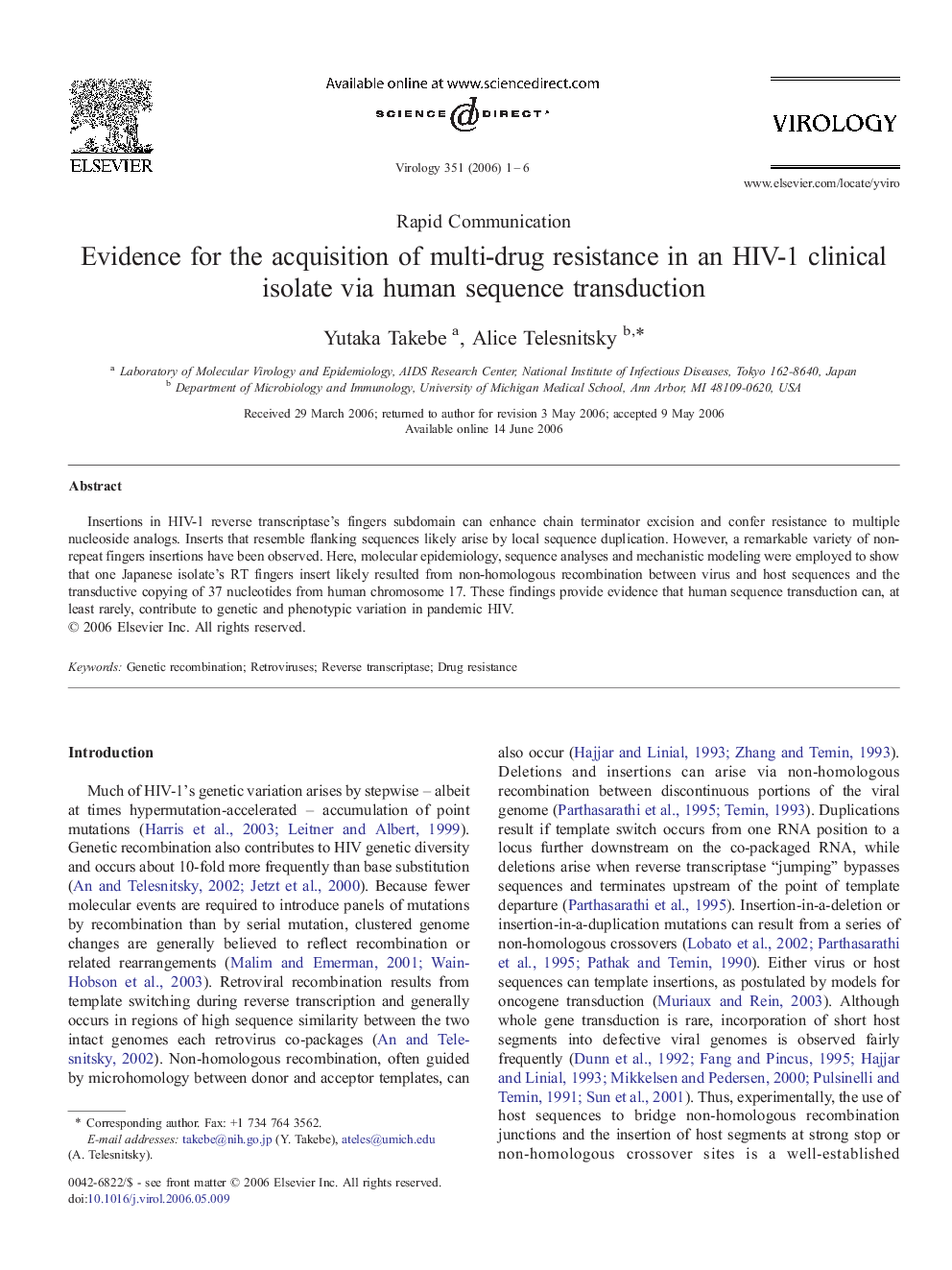| Article ID | Journal | Published Year | Pages | File Type |
|---|---|---|---|---|
| 3426816 | Virology | 2006 | 6 Pages |
Insertions in HIV-1 reverse transcriptase's fingers subdomain can enhance chain terminator excision and confer resistance to multiple nucleoside analogs. Inserts that resemble flanking sequences likely arise by local sequence duplication. However, a remarkable variety of non-repeat fingers insertions have been observed. Here, molecular epidemiology, sequence analyses and mechanistic modeling were employed to show that one Japanese isolate's RT fingers insert likely resulted from non-homologous recombination between virus and host sequences and the transductive copying of 37 nucleotides from human chromosome 17. These findings provide evidence that human sequence transduction can, at least rarely, contribute to genetic and phenotypic variation in pandemic HIV.
